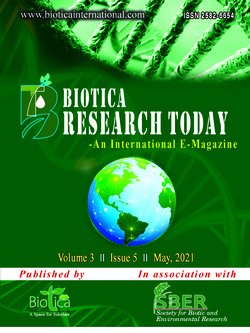
Use and Dissemination of Information Communication Technology to Farming Women is Boon in Indian Agriculture
Meenakshi Malik*
ICAR- National Research Centre for Integrated Pest Management, New Delhi, Delhi (110 012), India
Mukesh Sehgal
ICAR- National Research Centre for Integrated Pest Management, New Delhi, Delhi (110 012), India
Ardhendu Chakraborty
Krishi Vigyan Kendra-Khowai, Divyodaya, Chebri, Khowai, Tripura (799 207), India
DOI: NIL
Keywords: Farmer field school, Group discussions, IPM, Women
Abstract
A major part of Indian agriculture is supported by farming illiterate women. More than 45% of the working population comprises of farming women especially in western Uttar Pradesh, India. The study area emphasizes the empowerment of farming women for adopting and implementing IPM technologies through the use of the latest information and communication tools. They are involved in agricultural operations right from the selection of seeds, raising healthy nursery, sowing of crop plants to the final harvest of the products and are the key supporters and keen listeners for carrying forward the promising and economically viable IPM technologies for different crops. The paper will discuss the various activities that should be planned keeping the women as the center point which can enlighten and change the face of rural India as the women are never seen as key farmers due to lack of control over agricultural inputs and holdings but their role cannot remain hidden, isolated and deprived.
Downloads
not found
Reference
Baliyan, K., Kumar, S., 2014. Participation of Farm Household Women in Agricultural Activities and Its Determinants: A Study in Western Uttar Pradesh. Indian Journal of Labour Economics 57(3), 327–341.
Bhandari, G., Reddy, B.V.C., 2015. Impact of Out-Migration on Agriculture and Women Work Load: An Economic Analysis of Hilly Regions of Uttarakhand, India. Indian Journal of Agriculture Economics 70(3), 1-10.
Chen, M., 1989. Women’s Work in Indian Agriculture by Agro-Ecologic Zones: Meeting Needs of Landless and Land-Poor Women. Economic and Political Weekly 24(43), WS79–WS89.
